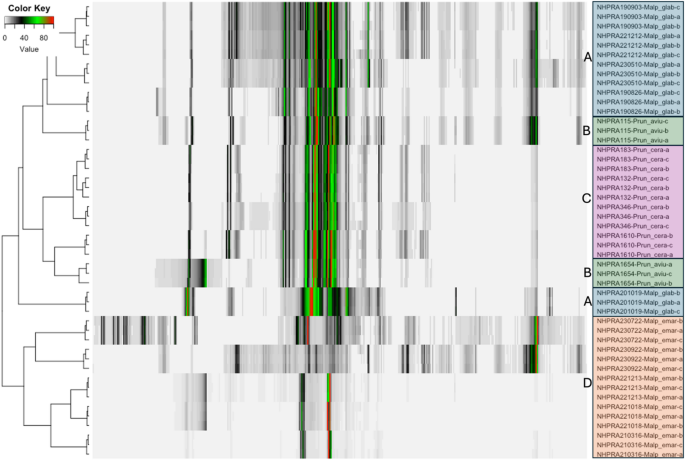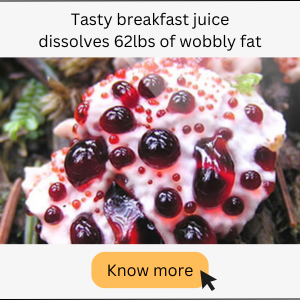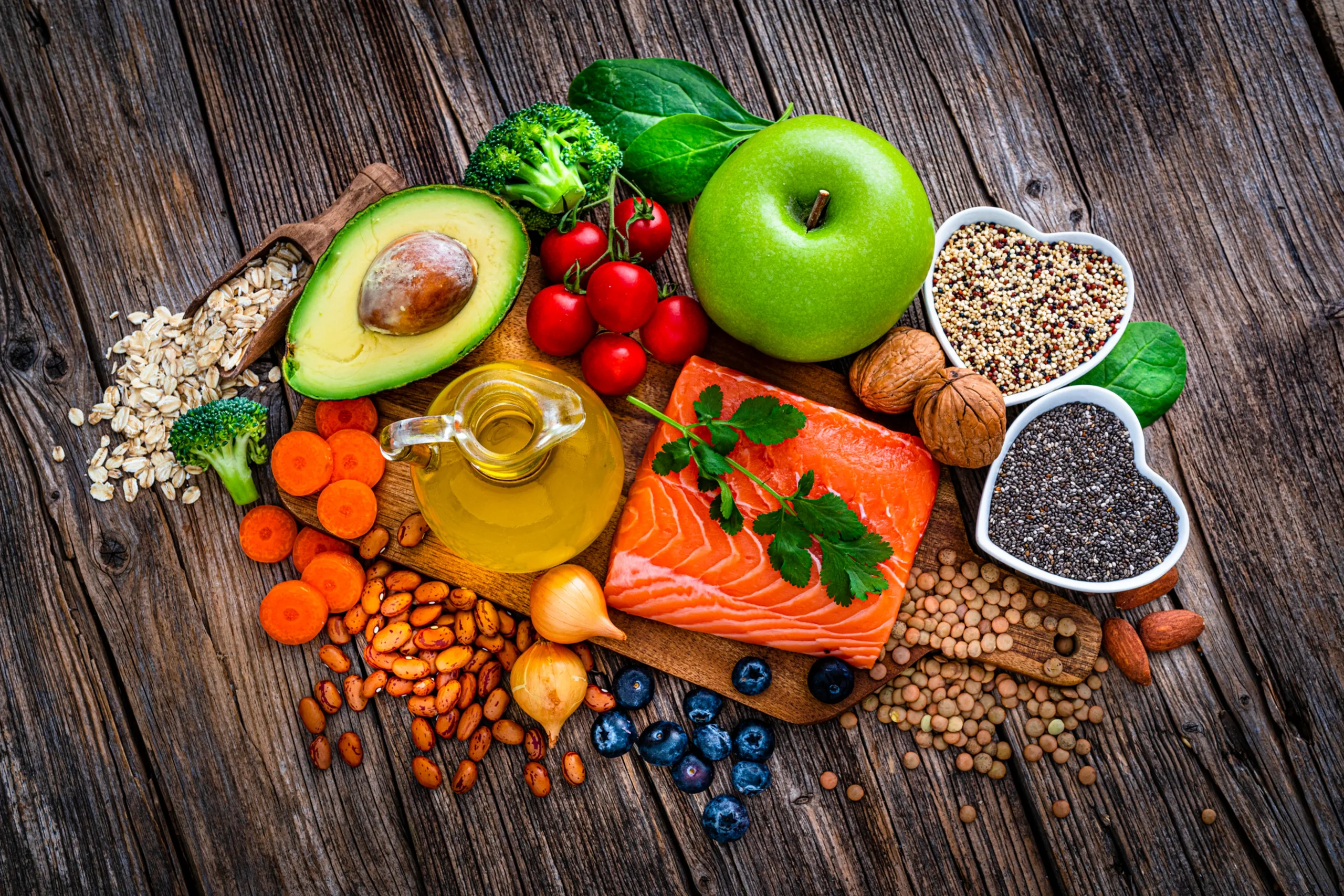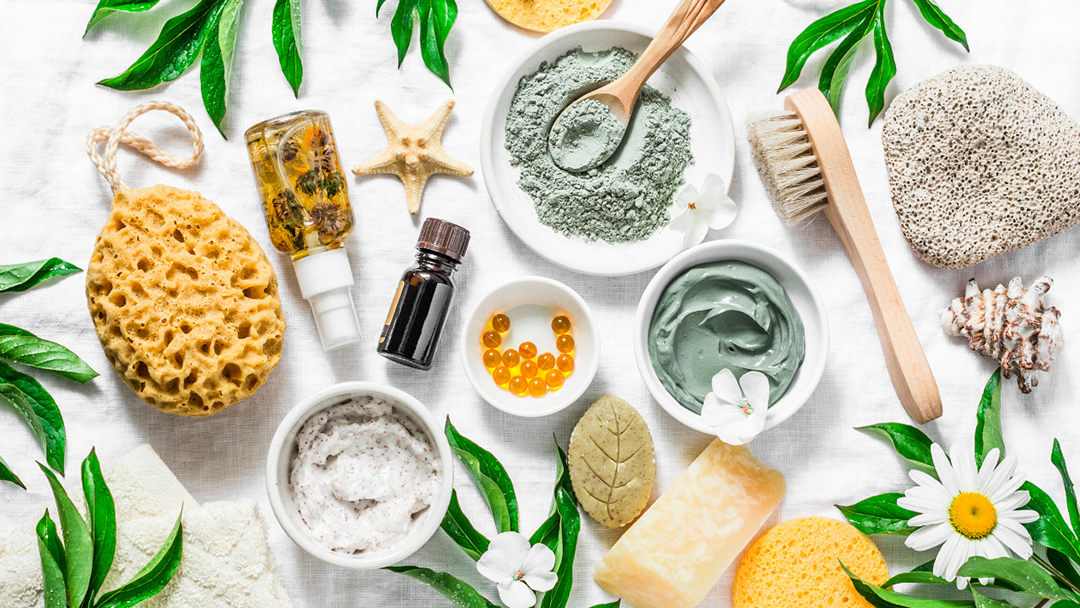Development of molecular diagnostic methods to distinguish acerola species for quality assurance of food, dietary supplements and natural health products
Laurindo, L. F. et al. Health benefits of acerola (Malpighia spp) and its by-products: A comprehensive review of nutrient-rich composition, pharmacological potential, and industrial applications. Food Biosci.https://doi.org/10.1016/j.fbio.2024.105422 (2024).
Uma Maheswari, M., Arumugam, T. & Lincy Sona, C. Fruits and vegetables as superfoods: Scope and demand. Pharma Innov. J.10, 119–129 (2021).
Li, D. Z. et al. Comparative analysis of a large dataset indicates that internal transcribed spacer (ITS) should be incorporated into the core barcode for seed plants. Proc. Natl. Acad. Sci. U. S. A.108, 19641–19646 (2011).
FMI. Processed Superfruit Market Outlook from 2025 to 2035. (2025). https://www.futuremarketinsights.com/reports/processed-superfruits-market (2025).
Fernández-Ríos, A. et al. A critical review of superfoods from a holistic nutritional and environmental approach. J. Clean. Prod. Vol. https://doi.org/10.1016/j.jclepro.2022.134491 (2022). 379 Preprint at.
Prakash, A. & Baskaran, R. Acerola, an untapped functional superfruit: A review on latest frontiers. J. Food Sci. Technol.55, 3373–3384. https://doi.org/10.1007/s13197-018-3309-5 (2018).
Mezadri, T., Villaño, D., Fernández-Pachón, M. S., García-Parrilla, M. C. & Troncoso, A. M. Antioxidant compounds and antioxidant activity in acerola (Malpighia emarginata DC.) fruits and derivatives. J. Food Compos. Anal. 21, 282–290 (2008).
Righetto, A. M., Netto, F. M. & Carraro, F. Chemical composition and antioxidant activity of juices from mature and immature acerola (Malpighia emarginata DC). Food Sci. Technol. Int.11, 315–321 (2005).
McGuffin, M., Tucker, A. & L., A. Y. J. T. K. Herbs of Commerce (American Herbal Products Assocation, 2000).
Duke, J. A. CRC Handbook of Alternative Cash Crops (CRC, 1993).
Rezende, Y. R. R. S., Nogueira, J. P. & Narain, N. Comparison and optimization of conventional and ultrasound assisted extraction for bioactive compounds and antioxidant activity from agro-industrial acerola (Malpighia emarginata DC) residue. LWT85, 158–169 (2017).
De Aparecida, S. et al. Antioxidant activity, ascorbic acid and total phenol of exotic fruits occurring in Brazil. Int. J. Food Sci. Nutr. 60, 439–448 (2009).
Singh, D. R. R. West Indian Cherry ñ A lesser known fruit for nutritional security. Natural Product Radiance. 5(5), 366–368 (2006).
Belwal, T. et al. Phytopharmacology of acerola (Malpighia spp.) and its potential as functional food. Trends Food Sci. Technol.74, 99–106. https://doi.org/10.1016/j.tifs.2018.01.014 (2018).
Paz, M. et al. Brazilian fruit pulps as functional foods and additives: Evaluation of bioactive compounds. Food Chem.172, 462–468 (2015).
do Rufino, M. Acerola and cashew Apple as sources of antioxidants and dietary fibre. Int. J. Food Sci. Technol. 45, 2227–2233 (2010).
Motohashi, N. et al. Biological activity of Barbados cherry (Acerola fruits, fruit of Malpighia emarginata DC) extracts and fractions. Phytother. Res.18, 212–223. https://doi.org/10.1002/ptr.1426 (2004).
Leffa, D. D. et al. Corrective effects of acerola (Malpighia emarginata DC.) juice intake on biochemical and genotoxical parameters in mice fed on a high-fat diet. Mutat. Res. – Fundamental Mol. Mech. Mutagen. 770, 144–152 (2014).
Horta, R. N. et al. Protective effects of acerola juice on genotoxicity induced by iron in vivo. Genet. Mol. Biol.39, 122–128 (2016).
Düsman, E., Almeida, I. V., Tonin, L. T. D. & Vicentini, V. E. P. In vivo antimutagenic effects of the Barbados Cherry fruit (Malpighia glabra linnaeus) in a chromosomal aberration assay. Genetics Mol. Research 15(4), (2016). https://doi.org/10.4238/gmr15049036
Da Silva Nunes, R. et al. Genotoxic and antigenotoxic activity of acerola (Malpighia glabra L.) extract in relation to the geographic origin. Phytother. Res.27, 1495–1501 (2013).
Düsman, E. et al. Radioprotective effect of the Barbados Cherry (Malpighia glabra L.) against radiopharmaceutical Iodine-131 in Wistar rats in vivo. BMC Complement Altern Med. 14, 41 (2014). http://www.biomedcentral.com/1472-6882/14/41
da Silva Nunes, R. et al. Antigenotoxicity and antioxidant activity of acerola fruit (Malpighia glabra L.) at two stages of ripeness. Plant Foods Hum. Nutr.66, 129–135 (2011).
Hanamura, T., Mayama, C., Aoki, H., Hirayama, Y. & Shimizu, M. Antihyperglycemic effect of polyphenols from acerola (Malpighia emarginata DC.) fruit. Biosci. Biotechnol. Biochem.70, 1813–1820 (2006).
El-Hawary, S. S., El-Fitiany, R. A., Mousa, O. M., Salama, A. A. A. & El gedaily, R. A. Metabolic profiling and in vivo hepatoprotective activity of Malpighia glabra L. leaves. J. Food Biochem. 45(2), e13588. https://doi.org/10.1111/jfbc.13588 (2021).
Costa, A. et al. Clinical, biometric and ultrasound assessment of the effects of daily use of a nutraceutical composed of lycopene, acerola extract, grape seed extract and biomarine complex in photoaged human skin. Bras. Dermatol. 87, 52–61 (2012).
Delva, L. & Goodrich-Schneider, R. Antioxidant activity and antimicrobial properties of phenolic extracts from acerola (Malpighia emarginata DC) fruit. Int. J. Food Sci. Technol.48, 1048–1056 (2013).
de Miskinis, A. S., Nascimento, R. & Colussi, R. L. Á. Bioactive compounds from acerola pomace: A review. Food Chemistry vol. 404 Preprint at (2023). https://doi.org/10.1016/j.foodchem.2022.134613
Vilvert, J. C., de Freitas, S. T., Veloso, C. M. & Amaral, C. L. F. Genetic diversity on acerola quality: A systematic review. Braz. Arch. Biol. Technol.https://doi.org/10.1590/1678-4324-2024220490 (2024).
de Assis, S. A., Lima, D. C. & de Faria Oliveira, O. M. M. Activity of pectinmethylesterase, pectin content and vitamin C in acerola fruit at various stages of fruit development. Food Chem.74, 133–137 (2001).
dos Santos, C. P. et al. Transcriptome analysis of acerola fruit ripening: Insights into ascorbate, ethylene, respiration, and softening metabolisms. Plant. Mol. Biol.101, 269–296 (2019).
Fernandes, F. A. N., Santos, V. O., Gomes, W. F. & Rodrigues, S. Application of high-intensity ultrasound on acerola (Malpighia emarginata) juice supplemented with fructooligosaccharides and its effects on vitamins, phenolics, carotenoids, and antioxidant capacity. Processeshttps://doi.org/10.3390/pr11082243 (2023).
Assis, S. A., De, Fernandes, F. P., Martins, A. B. G., Oliveira, O. M. M. D. F. & Acerola Importance, culture conditions, production and biochemical aspects. Fruits vol. 63 93–101 Preprint at (2008). https://doi.org/10.1051/fruits:2007051
Ragupathy, S. et al. Exploring DNA quantity and quality from raw materials to botanical extracts. Heliyonhttps://doi.org/10.1016/j.heliyon.2019.e01935 (2019).
Yip, P. Y., Chau, C. F., Mak, C. Y. & Kwan, H. S. DNA methods for identification of Chinese medicinal materials. Chin. Med.https://doi.org/10.1186/1749-8546-2-9 (2007).
Newmaster, S., Ragupathy, S. & Kress, W. J. Authentication of Medicinal Plant Components in North America’s NHP Industry Using Molecular Diagnostic Tools. in Medicinal and Aromatic Plants of North America (ed. Máthé, Á.) 325–339Springer International Publishing, Cham, (2020). https://doi.org/10.1007/978-3-030-44930-8_13
Kesanakurti, P. et al. Development of hydrolysis probe-based qPCR assays for Panax ginseng and Panax quinquefolius for detection of adulteration in ginseng herbal products. Foods. 10, 2705. https://doi.org/10.3390/foods10112705 (2021).
Yu, J. et al. Progress in the use of DNA barcodes in the identification and classification of medicinal plants. Ecotoxicol Environ. Saf 208, 111691 (2021). https://doi.org/10.1016/j.ecoenv.2020.111691
Raclariu-Manolică, A. C. & de Boer, H. J. Chapter 8 – DNA barcoding and metabarcoding for quality control of botanicals and derived herbal products. in Evidence-Based Validation of Herbal Medicine (Second Edition) (ed. Mukherjee, P. K.) 223–238 (Elsevier, 2022). https://doi.org/10.1016/B978-0-323-85542-6.00004-4
Travadi, T. et al. Advancing Herbal Product Authentication: A Comprehensive Review Of DNA-Based Approach For Quality Control And Safety Assurance. Educational Adm. Theory Practices doi:https://doi.org/10.53555/kuey.v30i6(s).5308. (2024).
Lanubile, A., Stagnati, L., Marocco, A. & Busconi, M. DNA-based techniques to check quality and authenticity of food, feed and medicinal products of plant origin: A review. Trends Food Sci. Technol.https://doi.org/10.1016/j.tifs.2024.104568 (2024).
Muyumba, N. W., Mutombo, S. C., Sheridan, H., Nachtergael, A. & Duez, P. Quality control of herbal drugs and preparations: The methods of analysis, their relevance and applications. Talanta Open. 4, 100070. https://doi.org/10.1016/j.talo.2021.100070 (2021).
Ichim, M. C. & Booker, A. Chemical authentication of botanical ingredients: A review of commercial herbal products. Front. Pharmacol.https://doi.org/10.3389/fphar.2021.666850 (2021).
Abraham, E. J. & Kellogg, J. J. Chemometric-guided approaches for profiling and authenticating botanical materials. Front. Nutr.https://doi.org/10.3389/fnut.2021.780228 (2021).
Klein-Junior, L. C. et al. Quality control of herbal medicines: From traditional techniques to state-of-the-art approaches. Planta Med.87, 964–988. https://doi.org/10.1055/a-1529-8339 (2021).
Salo, H. M. et al. Authentication of berries and berry-based food products. Compr. Rev. Food Sci. Food Saf. 20, 5197–5225 (2021).
García-Pérez, P., Becchi, P. P., Zhang, L., Rocchetti, G. & Lucini, L. Metabolomics and chemometrics: The next-generation analytical toolkit for the evaluation of food quality and authenticity. Trends Food Sci. Technol.https://doi.org/10.1016/j.tifs.2024.104481 (2024).
Ichim, M. C., Scotti, F. & Booker, A. Quality evaluation of commercial herbal products using chemical methods. Crit. Rev. Food Sci. Nutr.64, 4219–4239. https://doi.org/10.1080/10408398.2022.2140120 (2024).
Urumarudappa, S. K. J. et al. DNA barcoding and NMR spectroscopy-based assessment of species adulteration in the raw herbal trade of Saraca asoca (Roxb.) willd, an important medicinal plant. Int. J. Legal Med.130, 1457–1470 (2016).
Kesanakurti, P., Thirugnanasambandam, A., Ragupathy, S. & Newmaster, S. G. Genome skimming and NMR chemical fingerprinting provide quality assurance biotechnology to validate sarsaparilla identity and purity. Sci. Rep. 10, 19192. https://doi.org/10.1038/s41598-020-76073-7 (2020).
Shirahata, T. et al. Metabolic fingerprinting for discrimination of DNA-authenticated atractylodes plants using 1H NMR spectroscopy. J. Nat. Med.75, 475–488 (2021).
Alberts, P. S. F. & Meyer, J. J. M. Integrating chemotaxonomic-based metabolomics data with DNA barcoding for plant identification: A case study on south-east African Erythroxylaceae species. South. Afr. J. Bot. 146, 174–186 (2022).
Ragupathy, S., Thirugnanasambandam, A., Vinayagam, V. & Newmaster, S. G. Nuclear magnetic resonance fingerprints and mini DNA markers for the authentication of cinnamon species ingredients used in food and natural health products. Plantshttps://doi.org/10.3390/plants13060841 (2024).
Ragupathy, S. et al. Flower species ingredient verification using orthogonal molecular methods. Foods. 13(12), 1862.https://doi.org/10.3390/foods13121862 (2024).
Wang, X. et al. Fruit and vegetable consumption and mortality from all causes, cardiovascular disease, and cancer: Systematic review and dose-response meta-analysis of prospective cohort studies. BMJ. 349, 5472. https://doi.org/10.1136/bmj.g4490 (2014).
Martinez-Farina, C. F. et al. Chemical barcoding: A nuclear-magnetic-resonance-based approach to ensure the quality and safety of natural ingredients. J. Agric. Food Chem.67, 7765–7774 (2019).
Grazina, L., Amaral, J. S. & Mafra, I. Botanical origin authentication of dietary supplements by DNA-based approaches. Compr. Rev. Food Sci. Food Saf.19, 1080–1109. https://doi.org/10.1111/1541-4337.12551 (2020).
Raclariu, A. C., Heinrich, M., Ichim, M. C. & de Boer, H. Benefits and limitations of DNA barcoding and metabarcoding in herbal product authentication. Phytochem. Anal.29, 123–128. https://doi.org/10.1002/pca.2732 (2018).
Sarwat, M. & Yamdagni, M. M. DNA barcoding, microarrays and next generation sequencing: Recent tools for genetic diversity estimation and authentication of medicinal plants. Crit. Rev. Biotechnol.36, 191–203. https://doi.org/10.3109/07388551.2014.947563 (2016).
Mahima, K. et al. Advancements and future prospective of DNA barcodes in the herbal drug industry. Front. Pharmacol.https://doi.org/10.3389/fphar.2022.947512 (2022).
Osman, A. et al. Quality consistency of herbal products: chemical evaluation. In Progress in the Chemistry of Organic Natural Products 122: Botanical Dietary Supplements and Herbal Medicines (eds Kinghorn, A. D. et al.) 163–219 (Springer Nature Switzerland, 2023). https://doi.org/10.1007/978-3-031-26768-0_2.
Bharti, S. K. & Roy, R. Quantitative 1H NMR spectroscopy. TrAC – Trends in Analytical Chemistry35, 5–26. https://doi.org/10.1016/j.trac.2012.02.007 (2012).
Sobolev, A. P., Ingallina, C., Spano, M., Di Matteo, G. & Mannina, L. NMR-based approaches in the study of foods. Moleculeshttps://doi.org/10.3390/molecules27227906 (2022).
Esslinger, S., Riedl, J. & Fauhl-Hassek, C. Potential and limitations of non-targeted fingerprinting for authentication of food in official control. Food Res. Int. 60, 189–204 (2014).
Lolli, V. & Caligiani, A. How nuclear magnetic resonance contributes to food authentication: Current trends and perspectives. Curr. Opin. Food Sci.https://doi.org/10.1016/j.cofs.2024.101200 (2024).
Wishart, D. S. Metabolomics: Applications to food science and nutrition research. Trends Food Sci. Technol.19, 482–493. https://doi.org/10.1016/j.tifs.2008.03.003 (2008).
Spiteri, M. et al. Fast and global authenticity screening of honey using 1H-NMR profiling. Food Chem.189, 60–66 (2015).
Giraudeau, P. Quantitative NMR spectroscopy of complex mixtures. Chem. Commun. 59, 6627–6642 (2023).
Holmes, E., Tang, H., Wang, Y. & Seger, C. The Assessment of Plant Metabolite Profiles by NMR-Based Methodologies. (2006). https://doi.org/10.1055/s-2006-946682
Mahmud, I., Chowdhury, K. & Boroujerdi, A. PTC&B Tissue-Specific Metabolic Profile Study of Moringa Oleifera L. Using Nuclear Magnetic Resonance Spectroscopy. Plant Tissue Cult. & Biotech vol. 24 (2014).
Rosario, L. H. et al. DNA barcoding of the Solanaceae family in Puerto Rico including endangered and endemic species. J. Am. Soc. Hortic. Sci.144, 363–374 (2019).
Sayed, H. A., Mostafa, S., Haggag, I. M. & Hassan, N. A. DNA barcoding of Prunus species collection conserved in the National gene bank of Egypt. Mol. Biotechnol.65, 410–418 (2023).
Kress, W. J., Erickson, D. L. A. & Two-Locus Global DNA barcode for land plants: the coding RbcL gene complements the Non-Coding trnH-psbA spacer region. PLoS One 2(6), e508 (2007). https://doi.org/10.1371/journal.pone.0000508
Baldwin, B. G. et al. The its region of nuclear ribosomal DNA: A valuable source of evidence on angiosperm phylogeny. Ann. Mo. Bot. Gard.82247. (1995).
Kress, W. J., Wurdack, K. J., Zimmer, E. A., Weigt, L. A. & Janzen, D. H. Use of DNA Barcodes to Identify Flowering Plants. (2005). http://www.pnas.org.10.1073pnas.0503123102
Cheng, T. et al. Barcoding the kingdom plantae: New PCR primers for ITS regions of plants with improved universality and specificity. Mol. Ecol. Resour.16, 138–149 (2016).
Yao, H. et al. Use of ITS2 region as the universal DNA barcode for plants and animals. PLoS One. 5(10), e13102.https://doi.org/10.1371/journal.pone.0013102 (2010).
Kress, W. J. Plant DNA barcodes: Applications today and in the future. J. Syst. Evol.55, 291–307. https://doi.org/10.1111/jse.12254 (2017).
Antil, S. et al. DNA barcoding, an effective tool for species identification: A review. Mol. Biol. Rep.50, 761–775. https://doi.org/10.1007/s11033-022-08015-7 (2023).
Fazekas, A. J., Kuzmina, M. L., Newmaster, S. G. & Hollingsworth, P. M. DNA barcoding methods for land plants. in 223–252 (2012). https://doi.org/10.1007/978-1-61779-591-6_11
Thompson, J. D., Higgins, D. G. & Gibson, T. J. CLUSTAL w: Improving the sensitivity of progressive multiple sequence alignment through sequence weighting, position-specific gap penalties and weight matrix choice. Nucleic Acids Res.22, 4673–4680 (1994).
Tamura, K., Stecher, G. & Kumar, S. MEGA11: molecular evolutionary genetics analysis version 11. Mol. Biol. Evol. 38, 3022–3027 (2021).
Beckonert, O. et al. Metabolic profiling, metabolomic and metabonomic procedures for NMR spectroscopy of urine, plasma, serum and tissue extracts. Nat. Protoc.2, 2692–2703 (2007).
Nicholson, J. K., Foxall, P. J. D., Spraul, M., Farrant, R. D. & Lindon J. C. 750 MHz 1H and 1H-13 C NMR Spectroscopy of Human Blood Plasma. Anal Chem 67, 793–811 (1995).
Emwas, A. H. M. The strengths and weaknesses of NMR spectroscopy and mass spectrometry with particular focus on metabolomics research. in 161–193 (2015). https://doi.org/10.1007/978-1-4939-2377-9_13
Lê, S., Josse, J. & Husson, F. FactoMineR: an R package for multivariate analysis. J Stat. Softw 25, 1–18. (2008). https://doi.org/10.18637/jss.v025.i01
Bourafai-Aziez, A. et al. Development, validation, and use of 1H-NMR spectroscopy for evaluating the quality of Acerola-based food supplements and quantifying ascorbic acid. Molecules, 27(17), 5614. https://doi.org/10.3390/molecules27175614 (2022).
Smillie, T. J. & Khan, I. A. A comprehensive approach to identifying and authenticating botanical products. Clin. Pharmacol. Ther.87, 175–186. https://doi.org/10.1038/clpt.2009.287 (2010).
Mukherjee, P. K., Bahadur, S., Chaudhary, S. K., Kar, A. & Mukherjee, K. Chapter 1 – Quality Related Safety Issue-Evidence-Based Validation of Herbal Medicine Farm To Pharmain 1–28 (Elsevier Inc, 2015). https://doi.org/10.1016/B978-0-12-800874-4.00001-5
Govindaraghavan, S. & Sucher, N. J. Quality assessment of medicinal herbs and their extracts: Criteria and prerequisites for consistent safety and efficacy of herbal medicines. Epilepsy Behav.52, 363–371 (2015).
Dubey, N. K., Kumar, R. & Tripathi, P. Global promotion of herbal medicine: india’s opportunity. Curr Sci 86, 37–41 (2004).
de Medeiros, F. G. M., Pereira, G. B. C., Pedrini, M. R. S., Hoskin, R. T. & Nunes, A. O. Evaluation of the environmental performance of the production of polyphenol-rich fruit powders: A case study on acerola. J Food Eng 372, (2024). https://doi.org/10.1016/j.jfoodeng.2024.112010
Gomes, B. T. et al. Acerola byproducts microencapsulated by spray and freeze-drying: the effect of carrier agent and drying method on the production of bioactive powder. Int. J. Food Eng. 20, 347–356 (2024).
Fonseca, M. T. et al. Improving the stability of spray-dried probiotic acerola juice: A study on hydrocolloids’ efficacy and process variables. Food Bioprod. Process.147, 209–218 (2024).
Coelho, B. E. S. et al. Production and characterization of powdered acerola juice obtained by atomization. Acta Scientiarum – Technology 47, 1–14 (2025).
Walsh, K. B. & Ragupathy, S. Mycorrhizal colonisation of three hybrid papayas (Carica papaya) under mulched and bare ground conditions. Aust. J. Exp. Agric.4781. (2007).
Dubouzet, J. G. & Shinoda, K. Phylogenetic analysis of the internal transcribed spacer region of Japanese Lilium species. Theor. Appl. Genet.98, 954–960 (1999).
Faller, A. C. et al. DNA quality and quantity analysis of camellia sinensis through processing from fresh leaves to a green tea extract. J. AOAC Int.102, 1798–1807 (2019).
Source link
Share this article:












